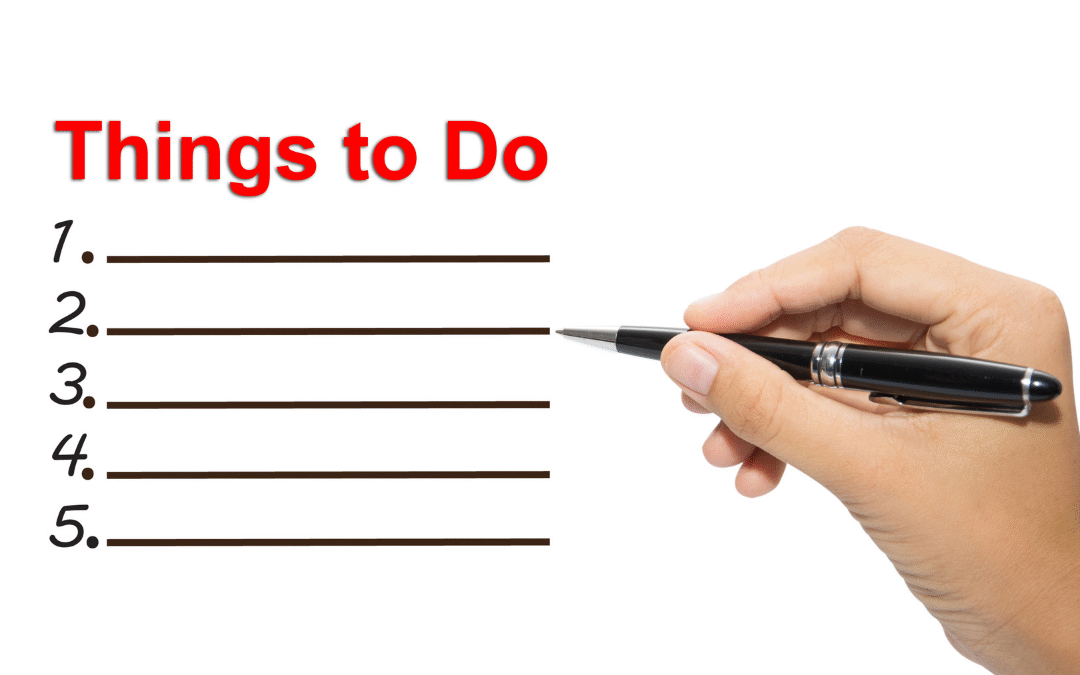Creativity can sometimes feel elusive, but with the right techniques, you can unlock your potential as a writer. In this post, I’ll share 10 proven methods that have helped me elevate my creative writing and can do the same for you. Whether you’re looking to enhance your storytelling, develop unique characters, or simply overcome writer’s block, these tips will guide you on your journey to becoming a more confident and expressive writer. Let’s dive in and explore how you can transform your writing process!
Key Takeaways:
- Utilize prompts and exercises to stimulate new ideas and overcome writer’s block, fostering a more consistent writing practice.
- Incorporate observation and personal experiences into your writing to add authenticity and depth to your characters and stories.
- Experiment with different writing styles and genres to expand your skill set and discover your unique voice.
Unlocking Your Imagination: The Power of Free Writing
Free writing is a powerful tool that liberates your thoughts and unleashes your creativity. By allowing your mind to flow without constraints, you create a space ripe for innovative ideas. Set a timer for 10-15 minutes, and let your pen glide across the page without worrying about grammar or structure. This unfiltered expression can lead to surprising insights and unique storylines, igniting your imagination in ways you might not have expected.
Setting the Scene: Creating a Safe Space
Crafting a dedicated environment for your free writing sessions is imperative. Find a quiet nook, free from distractions, and fill it with items that inspire you, like books, art, or nature. Whether it’s soft lighting, a comfortable chair, or your favorite music, ensure that your setting makes you feel at ease. This welcoming atmosphere encourages your mind to roam freely, opening the door to fresh ideas and creative spontaneity.
Tapping into Your Stream of Consciousness
Allowing your thoughts to flow unchecked can produce unexpected gems that enrich your writing. As you write, don’t censor or analyze your thoughts; rather, let them pour out onto the page as they come. This process usually unveils deep-seated emotions, memories, and ideas that you might overlook in structured writing. By embracing this spontaneity, I often discover new angles for my stories and characters that I hadn’t anticipated.
Diving deeper into stream of consciousness writing, I’ve found that it embodies a raw and honest approach to self-expression. It’s about capturing your unfiltered thoughts, often leading to profound revelations about your characters or narrative. As you write, you might find connections between seemingly disparate thoughts, making your storytelling richer and more layered. Many writers, including the likes of Jack Kerouac and Virginia Woolf, mastered this technique, using it as a pathway to explore their inner worlds and craft compelling narratives. Try writing without stopping for a set time, and witness how your subconscious can illuminate pathways previously hidden from your conscious mind.
The Art of Storytelling: Building Compelling Narratives
Crafting a narrative that captivates readers involves weaving together various elements to create a tapestry that resonates emotionally. Engaging storytelling hinges on a clear structure, with compelling beginnings that draw readers in, gripping middles that hold their attention, and satisfying endings that leave a lasting impression. I find that a well-paced story often balances tension and relief, leading the audience through a roller-coaster of emotions while also maintaining a coherent flow from one scenario to the next.
Crafting Strong Characters: More Than Just Names
Characters are the lifeblood of any story; they’re not simply names on a page, but complex individuals with motivations, fears, and strengths that readers can connect with. I focus on developing multi-dimensional traits that reveal their quirks and vulnerabilities. A memorable character often experiences growth or change, making them relatable and real. For instance, think of Elizabeth Bennet from “Pride and Prejudice”; her journey of self-discovery and resilience offers both engagement and depth that readers cherish.
Harnessing Conflict: The Heartbeat of Your Story
Conflict is the engine that drives a narrative forward, compelling characters to evolve and inviting readers to invest in their journeys. Through conflict, we witness not just the external challenges they face, but also their internal struggles. An effective conflict can manifest in various forms—be it character versus character, self, or environment. By introducing obstacles that push characters towards transformation, you create a dynamic and thrilling story that keeps readers at the edge of their seats.
Diving deeper into the importance of conflict, it’s fascinating to see how even minor tensions can escalate into significant plot points, generating suspense and intrigue. For example, consider the tension between Frodo and Gollum in “The Lord of the Rings.” Their complicated relationship highlights not just the overarching struggle for the One Ring but also the themes of trust and moral dilemmas. I often find that layering conflicts—both internal and external—gives each character a chance to shine, creating memorable moments and profound connections with the audience. Engaging readers in this way encourages them to root for character resolutions, ensuring they remain invested in the outcome of your narrative.

Dialogue that Dances: Breathing Life into Your Characters
Bringing your characters to life hinges on the way they communicate. Dialogue isn’t just about what they say; it’s about how they say it, the cadence of their speech, and the emotions behind their words. Effective dialogue propels the story forward and reveals character depth. Pay attention to how people talk in real life, the quirks in their speech, and those little hesitations that add authenticity. By ensuring that your characters’ conversations feel genuine and vibrant, you breathe life into them and invite your readers into their world.
The Nuance of Natural Speech: Capturing Real Conversations
Natural speech is often messy and imperfect, reflecting real human interactions. By incorporating interruptions, colloquialisms, and varied pacing into your dialogue, you create a tapestry that mirrors actual conversation. I suggest listening to people talk around you or even recording snippets of conversations to understand the rhythm and flow of dialogue better. When you create dialogue that feels authentic, your characters’ personalities shine through, drawing readers in and making them more invested in the story.
Subtext in Dialogue: What’s Said and What’s Left Unsaid
Emphasizing subtext can elevate your dialogue significantly. Often, it’s what characters don’t say that holds the most weight. I find that the tension between words often reveals deeper emotions and motivations. For instance, two characters might discuss the weather, but their underlying conflict about an unresolved issue can resonate more powerfully. Exploring the relationship dynamics through unspoken words builds intrigue and keeps readers engaged, allowing them to read between the lines.
Subtext acts as a silent character in your dialogue, always present and influencing the conversation. I like to use moments of silence or pauses to create dramatic tension, which invites the reader to interpret the characters’ feelings. For example, imagine a discussion about dinner plans that abruptly halts; the potential for conflict lingers in the air. This technique encourages readers to look beyond the surface and explore the layers of meaning, deepening their connection to the characters and enhancing the overall narrative. Let your readers feel that something is unsaid, and they will remain captivated, eager to discover more.

Pacing and Structure: The Rhythm of Your Prose
Developing a keen sense of pacing and structure transforms your writing into a rhythmic experience for readers. This rhythm creates a flow that guides them through the narrative and enhances their emotional connection. I focus on varying sentence lengths and employing paragraphs that shift in intensity, allowing moments of suspense or tension to breathe, while also keeping the narrative lively. The way I manipulate the sequence of events can also affect how readers engage with the story, making it resonate on much deeper levels.
Managing Tension: Balancing Action and Reflection
Finding the sweet spot between action and reflection boosts both excitement and emotional depth. I alternate high-stakes moments with reflective passages to give readers time to absorb what’s happening. For instance, after a tense climax, pausing for a character’s internal monologue can heighten the stakes and deepen the reader’s investment, drawing them further into your narrative.
Experimenting with Form: Nonlinear Narratives and Alternative Structures
Diving into nonlinear narratives or embracing alternative structures can revitalize your storytelling approach. I love rearranging timelines, such as introducing flashbacks or parallel plots to create intrigue and complexity. This form of experimentation allows me to engage readers on multiple levels, inviting them to piece together the story like a puzzle while keeping the plot fresh and unpredictable.
For example, consider techniques like “in medias res,” where I throw readers straight into the action before filling in the backstory, creating instant curiosity. Alternatively, crafting a circular narrative that echoes its beginning at the conclusion can provide a satisfying sense of closure. Nonlinear storytelling can also break traditional expectations, such as intertwining character arcs with various perspectives or introducing items that signify key moments across the timeline. This dynamic approach not only enriches the narrative but challenges both you and your audience to think critically about the relationship between events, character development, and thematic depth.
Cultivating Descriptive Language: Painting with Words
Descriptive language acts as the colors on your writing canvas, enriching the experience for your readers. When you skillfully incorporate vivid images, emotions, and sounds, you create an immersive world that pulls them in. Think of your words as a paintbrush, each stroke meticulously chosen to evoke specific feelings, enveloping readers in your narrative. Through descriptive language, simple scenes transform into vibrant landscapes, evoking sights and sounds that linger long after the last word is read.
Using Sensory Details: Inviting Readers into Your World
Employing sensory details is the key to transporting readers straight into your narrative’s heart. By engaging the five senses—sight, sound, smell, taste, and touch—you paint a fuller picture that draws your audience into your world. For instance, describing the pungent aroma of fresh coffee brewing at dawn can evoke feelings of warmth, comfort, and the beginnings of a day filled with potential. Each sense you tap into offers a layer of engagement, making your writing more relatable and alive.
Striking the Balance: Avoiding Purple Prose
While descriptive language can enhance writing, an excess of flowery language, known as purple prose, can cloud meaning and distract readers. A good rule of thumb is to prioritize clarity and precision while still using vivid imagery. For example, instead of saying “the sun exploded in a fiery cascade across the horizon,” you could simply say “the sun rose, painting the sky in hues of orange and pink.” Striking this balance allows you to paint rich images without overwhelming your audience with unnecessary embellishments, ensuring your voice remains strong and clear.
Avoiding purple prose is vital in maintaining your narrative’s clarity. It’s tempting to get carried away, especially when inspired by your own vivid imagination. One method I find helpful is to read my work aloud. If I stumble over overly complex phrases or feel like I’m embellishing beyond what’s necessary, I know to streamline. Keeping the reader’s experience front and center allows me to appreciate succinctness while still creating vibrant imagery. The goal is to enhance, not distract; that’s where a minimalist approach can really shine.
Feedback and Revision: The Iterative Process
Embracing feedback is vital for refining your writing. Engaging in revision transforms initial drafts into polished works that resonate with readers. While it may feel daunting to share your creations, this iterative process opens doors to perspectives you might have missed, guiding you toward a finished piece that is truly engaging and impactful.
Constructive Criticism: Seeking Out Supportive Voices
Finding supportive voices for constructive criticism can make a world of difference in your creative journey. I seek out trusted friends, fellow writers, or writing groups who provide honest yet encouraging feedback. These interactions create a safe space where you can openly discuss ideas and challenges, helping you view your work through a fresh lens and sparking inspiration for improvement.
The Art of Self-Editing: A Writer’s Best Friend
Self-editing is an imperative skill that enhances your writing’s clarity and impact. By stepping back from your draft and approaching it with fresh eyes, I can identify areas that need refinement or reworking. This process involves multiple readings, focusing first on larger structural issues before honing in on language choices, grammar, and style. As I eliminate redundancies, clarify ideas, and strengthen my prose, I watch my work evolve into something truly compelling.
One effective strategy I’ve discovered is the “read aloud” method. By vocalizing my writing, nuances and awkward phrasing become more apparent. It’s surprising how hearing your words can illuminate issues you might have glossed over while reading silently. Pairing this technique with tools like Grammarly or Hemingway can aid in spotting grammar mistakes and enhancing sentence complexity. Over time, as I develop a disciplined self-editing routine, my pieces not only improve but also become a source of pride, reflecting my growth as a writer.
To wrap up
As a reminder, improving your creative writing is an exciting journey that I hope you embrace. With these 10 proven techniques, I believe you can unlock new levels of creativity and expression in your writing. Whether it’s through freewriting, exploring different perspectives, or seeking feedback, each method can deepen your skills. I encourage you to experiment, find what resonates with you, and most importantly, have fun along the way. Happy writing!
FAQ
Q: What are some effective techniques to boost creativity in writing?
A: Several techniques can enhance creativity in your writing. Freewriting is one method, where you set a timer and write continuously without worrying about structure or grammar. This allows your thoughts to flow freely. Another technique is the mind mapping, where you create visual diagrams to explore ideas and their connections. Engaging with different forms of art, reading widely across genres, and writing daily can also stimulate imaginative thinking and lead to fresh ideas.
Q: How can I develop my unique writing voice?
A: Developing a unique writing voice involves practice and self-awareness. Start by writing regularly and experimenting with different styles and tones. Pay attention to the words you choose, sentence structure, and rhythm. Reading authors whose voices resonate with you can inspire your own style. Solicit feedback from peers to identify strengths in your writing, and don’t hesitate to embrace imperfections or quirks that make your voice distinctive.
Q: What role does feedback play in improving creative writing?
A: Feedback is an necessary component of improving your creative writing. Constructive criticism from peers, mentors, or workshops can provide insights into areas that may need refinement, such as plot development or character depth. It also helps you see your work from different perspectives, which can lead to new ideas and improvements. Embracing feedback as a learning opportunity, rather than viewing it as a critique, can significantly enhance your writing skills over time.








